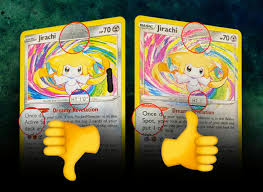- Since early May 2025, at least 54 victims have lost over $111,000 to Pokémon card scams.
- Scammers primarily operate on Carousell, posting listings for Pokémon cards.
- They typically move conversations to WhatsApp or other messaging apps after initial contact.
- One example shows scammers asking for $1,650 for a case of Pokémon TCG: Scarlet & Violet—Destined Rivals Booster Box.
- Victims paid via PayNow or bank transfer and only realised they were scammed when the cards never arrived or the sellers disappeared.
- Similar scams were reported in January 2025, when 50 people lost at least $163,000
The police recommend these safety measures:
- Keep conversations within the marketplace platform rather than moving to external messaging apps
- Conduct transactions in person whenever possible
- Inspect products before payment
This type of scam is particularly effective because it targets passionate collectors who may be eager to acquire specific cards, especially if they appear to be offered at attractive prices.
Understanding Pokémon Card Scams
Pokémon card scams represent a sophisticated form of fraud that targets collectors’ passion, urgency, and trust. Let me analyse the key elements that make these scams so effective:
Psychology of Targeting Collectors
- Artificial Scarcity: Scammers often claim to have rare or limited-edition cards that” are “hard to find elsewhere.
- FOMO (Fear of Missing Out): Creating urgency with phrases like “last one available” or “price increasing to”orrow”
- Trust Manipulation: Building false rapport through shared enthusiasm about Pokémon before the scam
Common Tactics
- Platform Migration: Moving from secure marketplaces to unprotected messaging apps
- Price Manipulation: Offering cards slightly below market value—low enough to attract buyers but high enough to appear legitimate
- Fake Verification: Sending manipulated photos of cards or”fake “authenticity certificates.
- False Reviews: Creating fake buyer accounts to leave positive feedback
- Sophisticated Listings: Using high-quality images (often stolen from legitimate sellers)
Red Flags
- Payment Methods: Insistence on non-reversible payment methods like bank transfers
- Communication Patterns: Rapid response initially, followed by excuses and delays after payment
- Too Good to Be True: Prices significantly lower than market value
- Urgency Pressure: Pushing for immediate payment decisions
The Human Cost
Beyond financial losses, victims experience:
- Emotional distress and feelings of betrayal
- Loss of trust in the collector community
- Embarrassment can prevent reporting
Here’s a story that illustrates how these scams typically unfold:
The Charizard Chase
Twelve-year-old Ethan had been collecting Pokémon cards for three years. His binder was filled with carefully arranged cards, each protected in pristine sleeves, but there was one he’d been dreaming of adding to his collection: a holographic Charizard. Not just any Charizard—he wanted the rare first-edition version that had become almost mythical among collectors at his school.
“Did you see that Tyler got a Char’zard?” his friend Mei asked during lunch. His parents bought it for his birthday. It’s worth like five hundred dollars!”
He couldn’t stop thinking about it. That evening, he checked his savings—$372, carefully saved from birthdays, New Year red packets, and weekly allowances. It was not enough, but close.
While browsing Carousell that weekend, a listing caught his”eye: “First Edition Holographic Charizard – PSA 8 -“$365.” The price was surprisingly reasonable compared to ones he’d seen. The seller, PokéCollector88, had several positive revEthan’sthan’s heart raced as he clicked to message the seller.
“Hi, I’m interested in the Ch rizard” card,” he typed.
The response quickly “kly: “GIt’s! It’s in perfect condition. I have several people asking about it, but you messed up first.”
Ethan felt a rush of excitement. He was first in line! The seller suggested they move to WhatsApp to discuss further, saying it was easier to send detailed photos there.
Over the next two days, Ethan and PokéCollector88 exchanged dozens of messages. The seller shared close-up photos of the holographic pattern, explaining that he was selling because he needed money for university. He even sent a picture of the card next to a handwritten note with the current “ate.
“I have another collector offering $40 now,” the seller casually says. But since you messaged fI’ll, I’ll honour the original price if you can today.”
Ethan panicked, didn’t want to lose the “card.” Pay can pay” now,” and quickly quit.
“Great! Send the money transfer. I’ll mail the card with tracking tomorrow morning.”
With his mother’s reluctant help, Ethan transferred his savings. The seller confirmed receipt and promised to send the tracking number the next day.
But the tracking number never came. On the first day, PokéCollapologisedologized for claiming he’d been busy. On the second day, he said there was an issue with the post office. By the third day, messages went unanswered.
After a week of silence, Ethan finally accepted the truth. There was no Charizard. His savings were gone.
“I should have known,” he told Mei, blinking back tears in the cafeteria. The price was too reasonable.”
His mother reported the scam to the police, but the officer explained that such cases were complex to solve. The bank account had already been emptied, and the scammer had vanished.
The following weekend, Ethan’s father took him to a legitimate card shop. “I can’t replace all your savings,” he said, “but I want you to learn something from this.” Together, they spoke with the shop owner about authentic cards and safe purchasing practices.
“Next time,” the shop owner said kindly, “bring any card you’re considering to us first. We’ll authenticate it for free. And remember—if a deal seems too good to be true, it probably is.”
Ethan nodded, still feeling the sting of the loss but grateful for the leHe’d. He’d been chasing a Charbututhe he’d caught it was something more valuable—wisdom that would protect his collection, and his heart, in the future.
As he left the shop, Ethan made a promise to himself: one day, he would own a real Charizard. And when that day came, the victory would be all the sweeter for knowing it was genuine.
Since January 2025, approximately 50 individuals in Singapore have fallen victim to Pokémon trading card scams, resulting in a collective loss of at least S$163,000.

On February 6, the Singapore Police Force (SPF) reported that the increase in scam incidents was primarily due to people being deceived by listings for character cards on platforms like Carousell and Facebook.
Scammers impersonating legitimate sellers were able to entice unsuspecting buyers into moving their discussions to messaging apps such as Telegram and WhatsApp.
Screenshots shared by the police reveal that these fraud “dealers” require dealers’ prices, like S$1,900 for a case of the V MAX Climax set or S$1,300 for Surging Sparks.

Once victims placed their orders, they would typically pay via PayNow or bank transfer.
Victims would only realise they had been scammed when the cards failed to arrive or when they could no longer contact the sellers.
The police reported at least 53 incidents in 2025 alone.
To protect themselves, buyers are urged to keep all communications within the marketplace platforms and to conduct transactions in person so they can verify the product before making any payments. For additional information about scams, visit www.scamshield.gov.sg.

Maxthon: Exploring the Digital Terrain
In an era where the digital world is perpetually changing, and our online engagements are continually adapting, the importance of centring users in their internet experiences cannot be overstated. The multitude of elements affecting our online presence compels us to make informed decisions regarding our choice of web browsers. It is vital to select browsers that not only prioritise security but also safeguard user privacy. Amidst the intense rivalry among numerous browsers seeking our preference, one stands out: Maxthon. This browser presents itself as an outstanding choice, providing a dependable solution to the challenges we encounter, all without any cost.

Maxthon’s Integration with Windows 11
When it comes to compatibility with Windows 11, Maxthon truly excels. This browser is loaded with an impressive collection of advanced features and a wide array of built-in tools specifically crafted to boost your online privacy. From an effective ad blocker to various anti-tracking measures, every tool is designed with care to foster a secure digital space for its users. Maxthon has established a distinct position in the saturated browser market, primarily due to its seamless integration with Windows 11, which enhances its reputation in an increasingly competitive field.

As you navigate the dynamic world of web browsers, Maxthon has cultivated a unique persona, steadfast in its commitment to providing a safe and private browsing experience. Fully aware of the numerous dangers that inhabit the extensive realms of cyberspace, Maxthon diligently protects your personal data. Employing advanced encryption technologies ensures that your sensitive information remains secure and confidential during your online activities.
